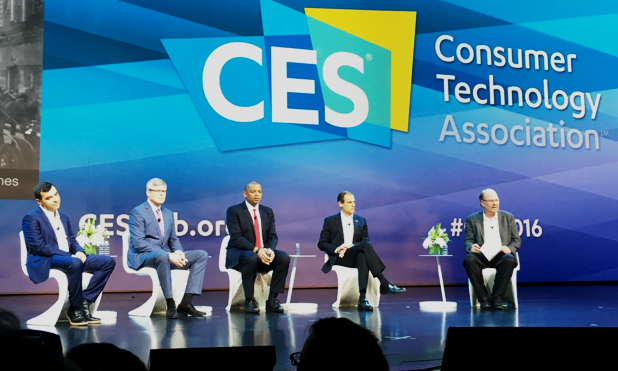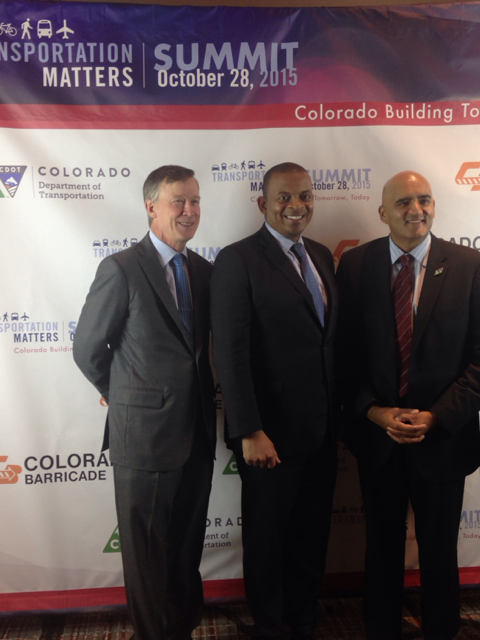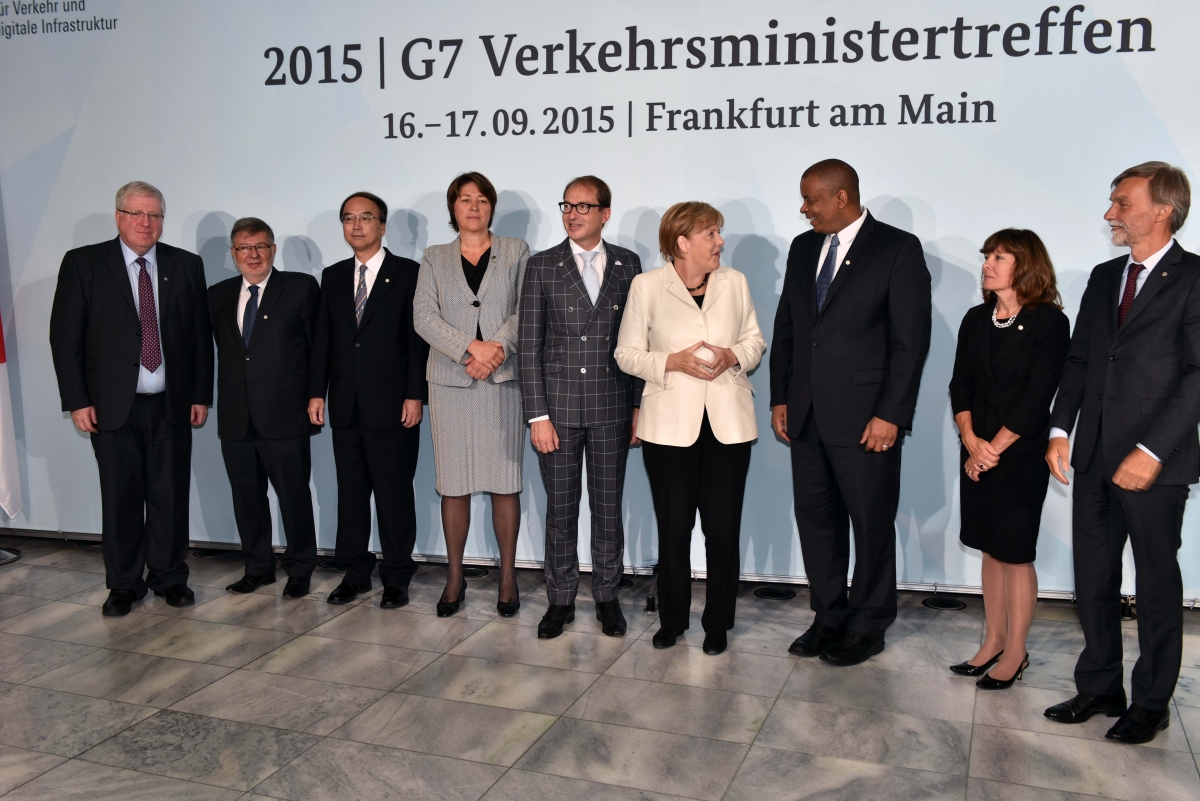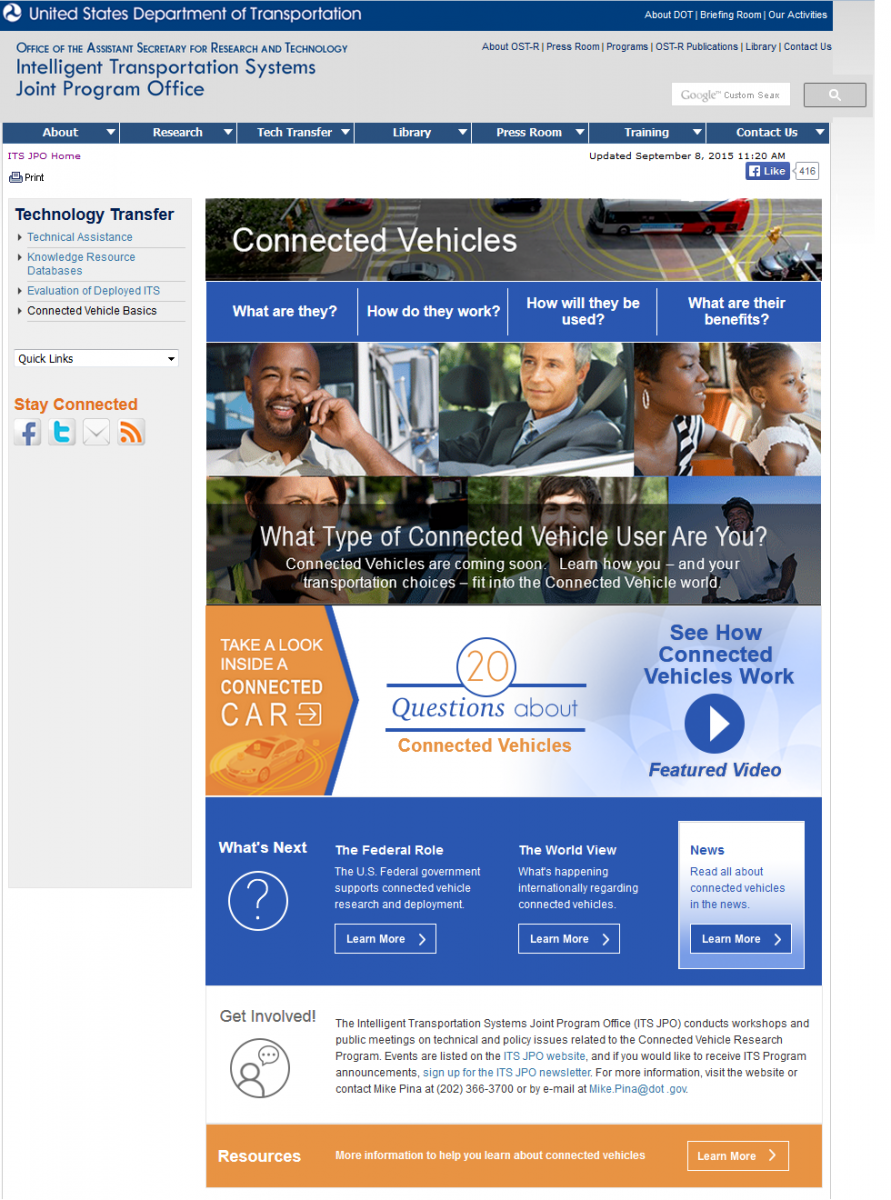v2i
At CES 2016, Mobileye partnership adds excitement to DOT Smart City Challenge
Today at CES 2016, I announced another key partnership for our Smart City Challenge: the winning city's public bus system will get installation of Mobileye's Shield +TM on every bus. This driver assistance safety technology helps bus drivers avoid and mitigate imminent collisions and protect road users including bicyclists, pedestrians, and motorcyclists.
This technology and support award is in addition to DOT's award of up to $40 million to create an integrated first-of-its-kind city that uses data and technology to shape how people and goods move…and an award of up to $10 million from the Challenge’s launch partner, Vulcan Philanthropy, to support infrastructure for electric vehicles.

The Smart City Challenge is an exciting opportunity for cities that want to improve their transportation networks through innovation, and today’s announcement makes it even more exciting. The winning city will be able to collaborate with DOT and with partners like Mobileye and Vulcan to implement bold, data-driven ideas to make transportation safer, easier, and more reliable. The outcome promises to be a model of what we can achieve when public and private entities work together using leading-edge data and technological tools...
Smart City Challenge seeks the best in integrated transportation technology for mid-sized cities
Today, we opened a Smart City Challenge for mayors and city leaders across America to integrate emerging technology into their transportation networks and define what it means to be a Smart City when it comes to transportation.
We encourage cities to develop their own unique vision, partnerships, and blueprints to demonstrate to the world what a fully integrated, forward-looking urban transportation network looks like...
New "Connected Vehicles" website covers all of the basics
As many have written here in the Fast Lane, DOT is very enthusiastic about connected vehicle technology and the safety, mobility, and environmental benefits that it promises. We in the Intelligent Transportation Systems Joint Program Office (ITS JPO) also recognize that this may be a new concept for some. That's why we have recently launched a new website describing the basics of connected vehicles.
Through this new site, everyone can understand the fundamentals of connected vehicles and learn why everyone at DOT is so excited about this promising technology.
Connected vehicle technology will wirelessly connect our vehicles to each other, to our roads, and to our personal mobile devices so they can exchange secure information about their position, speed, brake status, and more. It can also provide timely, situation-appropriate warnings and recommendations to drivers. The Connected Vehicles Basics website answers questions regarding how this technology works, what it makes possible, and how it will be used...
Colorado proving that Transportation Matters
Last week, street artists repainted much of Denver with a Back to the Future theme, commemorating the day that Marty McFly and Doc traveled to in their time machine. But, at the "Transportation Matters" Colorado DOT summit today in Denver, I had to break the news that, no, we do not have hover-cars yet, or flyways.
Soon however, we are likely to have cars that talk to each other and even drive themselves. In fact, we could see automation completely transform how we travel and how we move freight.

The potential innovations we see on the horizon aren't just fun and games. If we're going to continue moving the dial on transportation, and if we want to avoid being overwhelmed by the growth we’re going to experience as a country, we will absolutely need these technologies...
Automation, infrastructure dominate first-ever G7 Transport Ministers meeting
If you've been reading the Fast Lane even occasionally in the past few months, then you know this Department is very excited about the safety and mobility benefits that connected and automated vehicle technologies promise. Just last week, for example, we announced our three connected vehicle pilot projects in New York, Florida, and Wyoming, where we'll be putting these breakthrough technologies through their paces.
On the heels of that announcement, I traveled to Frankfurt, Germany for the first-ever G7 Transport Ministers meeting, and it was clear to me and everyone visiting the Frankfurt Motor Show that other nations take connected and automated vehicle technologies pretty seriously, too...

Connected Vehicle pilot programs seek a safer transportation future
Over the past year I have been visiting research labs, technology companies, and manufacturers to deliver a simple message: The U.S. Department of Transportation wants to roll out the red carpet, not the red tape, for new technologies in transportation. If an emerging technology can improve safety and improve how we move, we want to see it on the market as quickly as possible.
And, as many Fast Lane readers know, we are especially bullish about the use of connected and autonomous vehicle technology. Because, who among us has never started to switch lanes thinking that the lane next to them was clear when it wasn’t? And who has never once had a hard time seeing an upcoming stop sign at night?
None of us are perfect, and when we're behind the wheel, mistakes can --and do-- happen.
So imagine having a car that is equipped with technology that can correct human error. Imagine riding a bicycle to a transit stop during rush-hour or walking across a busy street. Except now, you can basically communicate with the drivers and infrastructure surrounding you, and you're armed with information, so you're much less vulnerable.
This is what connected vehicle technology can do. It promises to eliminate 80 percent of accidents in which drivers were not impaired...
A photo posted by U.S. Dept. of Transportation (@usdot)
U.S. Department of Transportation Announces up to $20 Million in Next Generation Connected Vehicle Technologies for New York City
U.S. Department of Transportation Announces up to $20 Million in Next Generation Connected Vehicle Technologies for New York City
U.S. Department of Transportation Announces up to $42 Million in Next Generation Connected Vehicle Technologies
U.S. Department of Transportation Announces up to $42 Million in Next Generation Connected Vehicle Technologies
Welcome to Pittsburgh, ITS. Welcome to the future, America
This week in Pittsburgh, the Intelligent Transportation Society America holds its 25th Annual Meeting. And, while that might not mean much to most readers, I can tell you that the people gathering for this week's conference are making a difference in all of our lives by making our cars safer and our road travel more efficient.
I can also tell you that Pittsburgh is a great place for this year's event because it is home to Carnegie Mellon University where, on a recent visit, I saw firsthand the promising automotive and roadway technologies that CMU students and faculty are developing.
So we at DOT heartily welcome participants to the Intelligent Transportation Society America 25th Annual Meeting and wish them a productive week. And if you're curious how these men and women are improving the way we travel, please read the article below from Greg Winfree, our Assistant Secretary for the Office of Research and Technology...



